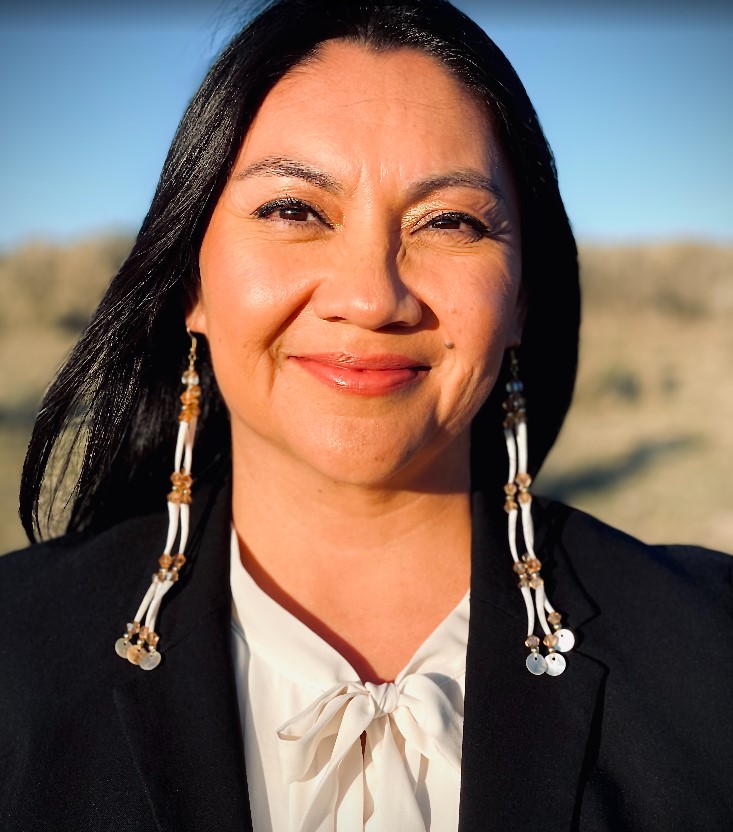Some information may be outdated.
Dawn Davis of the Shoshone-Bannock Tribes of Fort Hall, Idaho, studies the sustainability of ethno-significant plants. She works to deter people from harming culturally important plants by helping others understand the impacts on plant populations and the Indigenous cultures that have had direct relationships for thousands of years.
Here, Science Moab speaks with Davis about peyote, an important cultural plant used in traditional medicine found in the Southwest United States. She recently finished her Ph.D. at the University of Idaho with a dissertation entitled “The Peyote Path, a New Perspective on a Medicinal Plant in Peril.” We talk about how peyote is threatened and how she and others are working with land owners, Native communities, and scientists to maintain this important species.
Science Moab: Can you talk a little bit about peyote—give us an image of it and where it’s found, the kind of habitat you would find it in?
Davis: Peyote is a very low-growing cactus. It’s a greenish-gray color, and I’ve heard that it can be blue. To me, it’s one of the most beautiful cacti ever. It doesn’t have any needles, and it grows very similar to a carrot. So it has this subterranean root that is very similar to what a carrot looks like, which is where it stores all of its water. It’s a plant that’s self-pollinating, which means that it has male and female characteristics. It’s just a beautiful plant with pink and white flowers. It grows in the United States in South Texas, in an area that is commonly referred to by many Native American people as the peyote gardens. Its natural range actually extends into Central Mexico, less than 20% of its natural habitat is in the United States. Texas is 95% privately owned, so 100% of peyote and peyote habitat in Texas resides within private property.
Science Moab: What work needs to be done to protect peyote?
Davis: One thing that I really advocate for is wild peyote protection, so one of my goals was reaching out to landowners and trying to see their perspectives. One landowner [said that] they don’t have any peyote on their property, so why have this conversation? I eventually convinced them to just meet for coffee, and we had this really great conversation about their land and about how they’re really proud of their property.
After talking with this landowner for about 20 or 30 minutes, they finally said: “I do have peyote on my land, and I want you to come see it.” I was totally thrilled. The landowners are the key; they can really advocate on our behalf or they could also be a gatekeeper. They have a lot of concerns, but they were all very much aware of the peyote crisis.
Science Moab: What would you like to see moving forward, in regards to these issues?
Davis: I would love to see a rebuilt relationship with landowners. It took me eight years to make contact with [one] landowner. Once I did, it was clear that several of these landowners had informal agreements with Natives who were able to harvest on their property. The landowners that I spoke with were totally in favor of that. But legalized peyote distributors really disconnected Native American people from landowners to create a middleman. They served as peyote harvesters and dried the peyote before it was sold. For decades, this was really doing a disservice to the Native American church members because it really disconnected them from the land.
I think that one of the key pieces in peyote conservation and sustainability is reconnecting tribal members to the land, because peyote distributors are harvesting peyote that is not mature, reducing propagation. I think that if there were more Native American people, more peyotists, out there harvesting their own medicine, they would only harvest those that they know have seeded or are at a mature size. They’d also be aware of consumption, and how much are they going to harvest this day. That self-regulation is going to take place when you’re out there connecting to the land.
Science Moab: Can you share your thoughts on the psychedelic movement and its relationship with peyote?
Davis: I am like the antithesis of the psychedelic movement because I’m talking about extraction, appropriation, about leaving peyote alone. Other researchers are pushing for legalization, decriminalization, clinical trials, and things like that. I’m like, ‘slow down, Native American people need the opportunity to address this issue.’
I’m always trying to advocate for peyote preservation and also the right for peyote to be used by Native American people. I think that these spaces, psychedelic and academic, need to make sure that they are reaching out to truly Indigenous people. We have organizations co-opting the Indigenous voice, saying, “I have one Native American person who believes that peyote should be made legal. Therefore all Native American people believe this way.” And that’s not exactly true.
We’re all going to have differing opinions. The danger is that they’re projecting a voice for people who have actually had to deal with oppressive issues, genocidal and governmental policies to exterminate Native American people. My biggest concern with what’s happening with peyote is that Native American people are not given the full opportunity to address the peyote issue in a way that’s comfortable.
Science Moab is a nonprofit dedicated to engaging community members and visitors with the science happening in Southeast Utah and the Colorado Plateau. To learn more and listen to full interviews, visit www.sciencemoab.org. This interview has been edited for length and clarity.
Appreciate the coverage? Help keep local news alive.
Chip in to support the Moab Sun News.





